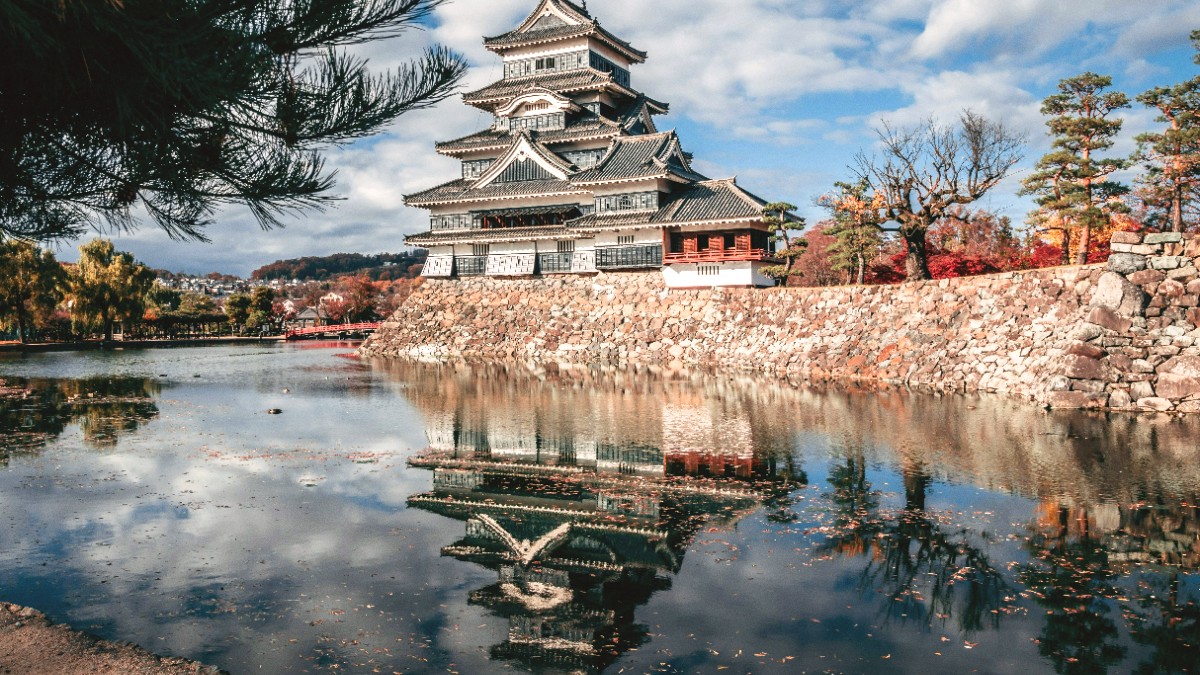
West Of Tokyo, Japan
Spring (March-May): Temperatures gradually rise, creating comfortable conditions for outdoor activities. March averages 5°C to 15°C, while May reaches 15°C to 20°C. Precipitation is moderate. Cherry blossom season typically occurs from late March to early April, with blooming variations by elevation.
Summer (June-August): This season brings warmth and high humidity. Temperatures range from 18°C to 28°C. June and early July mark the Tsuyu (rainy season), with frequent, sometimes heavy, rainfall. August offers the warmest lake temperatures for activities.
High Season (Spring & Autumn): Weather conditions are superb. Many festivals occur, adding to the cultural experience. Expect larger crowds for transport and popular viewpoints. Accommodation prices peak, requiring early booking. Restaurants see increased demand.
Shoulder Season (Late May, Early June, Early September): This period offers a balance. Weather remains pleasant, and crowds are thinner compared to peak seasons. Accommodation and flight prices might be slightly lower. Early September still has warm temperatures, but intense summer humidity begins to wane. Early June marks the start of the rainy season.
Crowds, peak prices.
Superb weather, festivals.
Crowds, long lines, peak prices.
Moderate crowds.
Pleasant weather, fewer crowds.
Rainy season start in June.
Tranquil experience.
Fewer tourists, lower prices, clear winter skies.
Cold temperatures, potential snow disruptions.
Rainy Season (Tsuyu) from early June to mid-July; rarely rains all day. Typhoon Season peaks from August to October, bringing strong winds and heavy rain, potentially causing transportation disruptions or temporary closures.
Owakudani is an active volcanic zone. Access to certain areas may face restrictions due to increased volcanic gas emissions. Always check official Hakone town advisories and the Hakone Ropeway status before visiting Owakudani for safety.
Late March to early April.
Late October to mid-November for peak colors.
Spring (April-May) and Autumn (September-October) offer comfortable temperatures.
Winter is especially atmospheric for enjoying outdoor hot springs.
Clearer skies common in Autumn and Winter, especially mornings.
Travelers visiting Hakone, as part of a trip to Japan, must meet the country's entry requirements. Japan has a straightforward visa policy for tourists from many nations.
Many nationalities enjoy visa-exempt entry for short-term stays, typically up to 90 days, when traveling for tourism. This includes citizens of the United States, Canada, Australia, New Zealand, most European Union countries, and the United Kingdom.
Prepare the following items for your entry into Japan. Your passport must be valid for the duration of your intended stay. Some airlines suggest a validity of at least six months beyond your departure date from Japan.
No general entry fee for tourists. Upon arrival, foreign visitors proceed through immigration control, provide fingerprints, and have a digital photo taken. An immigration officer reviews documents. A landing permission sticker in your passport shows visa status and permitted stay length.
After immigration, you proceed to customs. A customs declaration may be required for certain goods. Declare any items as needed.
Japan, including Hakone, can be expensive, but smart choices make enjoyable experiences possible across all budget levels.
¥8,000 - ¥15,000 (approx. $50 - $100 USD)
¥15,000 - ¥30,000 (approx. $100 - $200 USD)
¥30,000+ (approx. $200+ USD)
Accommodation (per night)
Hostel/Guesthouse Dorm Bed: ¥3,000 - ¥6,000
Business Hotel/Mid-range Ryokan: ¥8,000 - ¥20,000
Luxury Hotel/High-end Ryokan: ¥25,000 - ¥80,000+ (often includes dinner and breakfast)
Utilize convenience stores for affordable, high-quality meals. Seek out smaller, local eateries for more authentic and cheaper food options.
Many natural sites like Lake Ashi shores and specific hiking trails are free to explore.
Hakone Open-Air Museum: ¥1,600
Hakone Checkpoint: ¥500
Pola Museum of Art: ¥1,800
Japanese Yen (JPY, ¥). ATMs are widely available at Japan Post Bank and 7-Eleven stores, accepting international cards.
Carry some cash, as smaller establishments prefer cash.
Tipping is not customary in Japan. It can sometimes cause confusion or be considered impolite. Service charges are often included in bills.
A thoughtful gift (omiyage) from your home country is more appropriate than cash for exceptional service.
The Odakyu Hakone Free Pass offers unlimited rides and discounts. Purchase it online or at Odakyu Shinjuku Station in Tokyo before your departure.
Utilize public transport from the Free Pass network to avoid expensive taxis.